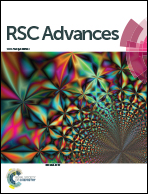Thiaporphyrins: from building blocks to multiporphyrin arrays
Abstract
21-Thiaporphyrins and 21,23-dithiaporphyrins resulting from the replacement of one and two pyrrole rings respectively, of tetrapyrrolic porphyrins possess singlet state energy levels which are lower than porphyrins and metalloporphyrins. This specific feature of thiaporphyrins is advantageous when thiaporphyrins are connected either covalently or non-covalently to porphyrins and metalloporphyrins for unidirectional flow of energy transfer/electron transfer. In recent times, the synthetic routes were developed for the synthesis of functionalized thiaporphyrin building blocks which were not accessible earlier. The functionalized thiaporphyrins have been used to synthesize several unsymmetrical thiaporphyrin-based arrays containing two or more different types of porphyrin subunits whose singlet state energy levels are arranged in a favourable way for the energy transfer/electron transfer. In this review, we describe different synthetic approaches being employed for the synthesis of functionalized thiaporphyrin building blocks and their use in the construction of several covalently and non-covalently linked thiaporphyrin-based multiporphyrin arrays ranging from dyads to octads. The photophysical studies are also described to show the possibility of singlet–singlet energy transfer from one porphyrin unit to another in some selected thiaporphyrin-based multiporphyrin arrays.


 Please wait while we load your content...
Please wait while we load your content...